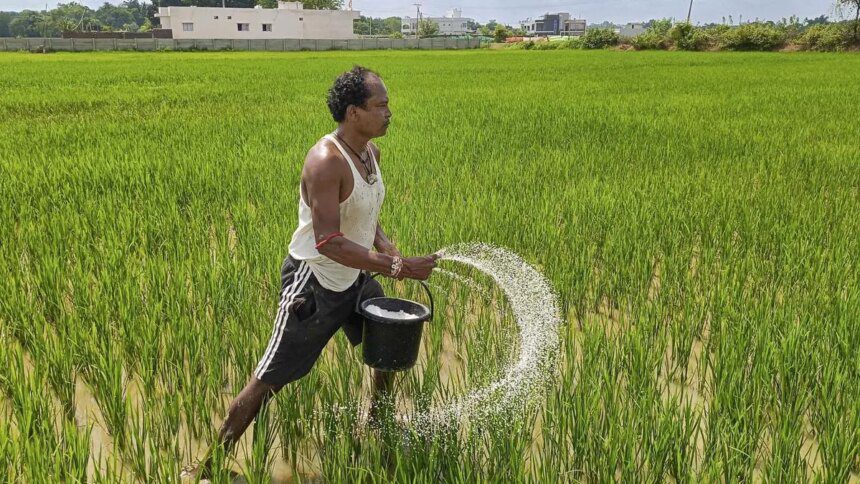India’s Commission for Agricultural Costs and Prices (CACP) has advised a phased increase in urea prices to rectify the disproportionate use of nutrients by farmers. In its recent report concerning the Price Policy for the Rabi marketing season 2026-27, the CACP noted, “The urea sector in India, which was highly dependent on imports, is now moving towards self-sufficiency due to government initiatives. However, the current fertilizer subsidy structure has led to excessive use of urea, resulting in the imbalanced use of nutrients.”
The CACP emphasized that the savings from increased urea prices be redirected to enhance subsidies for phosphorus (P) and potassium (K) fertilizers, addressing the nutrient imbalance issue. Currently, the Indian government heavily subsidizes urea, selling it to farmers at a maximum retail price of ₹242 per 45-kg bag, excluding neem coating and applicable taxes.
Excessive reliance on subsidized urea has distorted the nitrogen-phosphorus-potassium (NPK) ratio and led to consumption levels exceeding recommended guidelines, with some districts in Andhra Pradesh and Tamil Nadu reporting usage surpassing 500 kg per hectare. The CACP underscored the urgency of corrective measures to alleviate negative impacts on crop yield, soil health, and the environment.
Regarding imports, India depends on foreign sources for both raw and finished fertilizers, with approximately 30% of its demand met through imports. However, over the last decade, India has reduced its urea imports due to enhanced domestic production, driven by government initiatives aimed at achieving atmanirbharta, or self-reliance. Urea production increased from 24.5 million tonnes (mt) in 2015-16 to a record 31.4 mt by 2023-24, though a slight decline to 30.6 mt is projected for 2024-25. Concurrently, urea imports fell from 8.5 mt in 2015-16 to 5.6 mt in 2024-25, following a peak of 9.8 mt in 2020-21. The share of imports in total urea consumption has decreased from 27.7% to 14.6% during the same period.
Despite improvements in production, challenges remain in Indian agriculture, including nutrient imbalances, excessive fertilizer use in certain regions, micronutrient deficiencies, depletion of soil organic carbon, and increasing fertilizer subsidies. The CACP noted, “As problems of micronutrient deficiencies and low organic carbon in Indian soils are widespread, a nationwide intensive awareness campaign on balanced nutrition with a focus on micronutrients and bio-fertilizers should be launched.”
The government has initiated several programs to promote sustainable fertilizer use, including the Prime Minister’s Programme for Restoration, Awareness Building, Nourishment, and Amelioration of Mother Earth (PM-PRANAM), the Galvanizing Organic Bio-Agro Resources Dhan (GOBARdhan) scheme, and the promotion of nano-fertilizers and bio-fertilizers.
The CACP further stressed the importance of balanced fertilizer application based on soil test recommendations for reducing costs and enhancing nutrient efficiency. It recommended strengthening soil testing laboratories by installing modern equipment and providing training for staff on real-time soil analysis and advisory services for farmers.
In the current kharif season, several states have reported urea shortages. Contributing factors include the overuse of urea in response to an early monsoon and rising prices due to geopolitical tensions and export restrictions from China.
Published on October 2, 2025.










